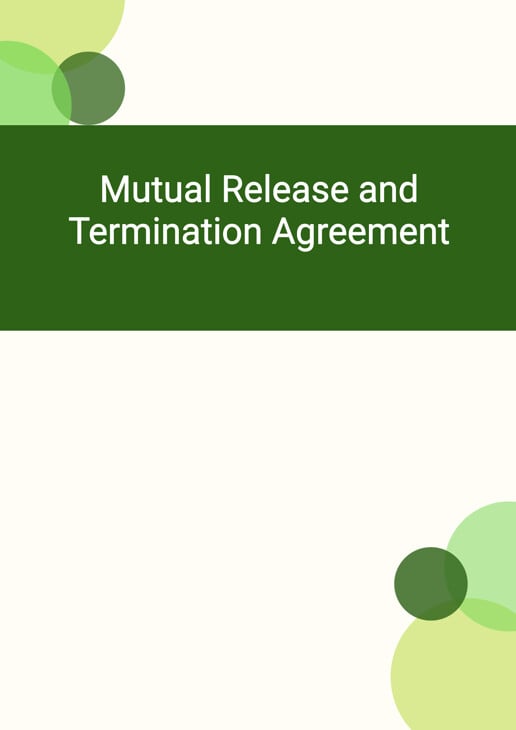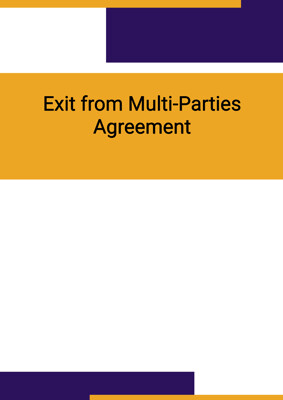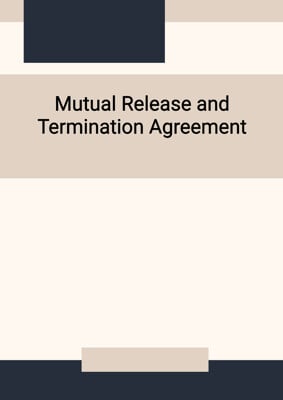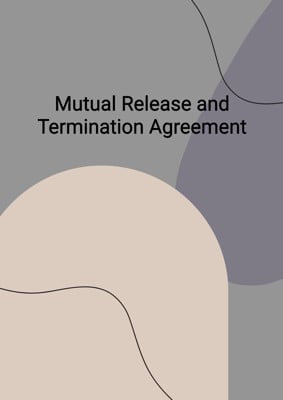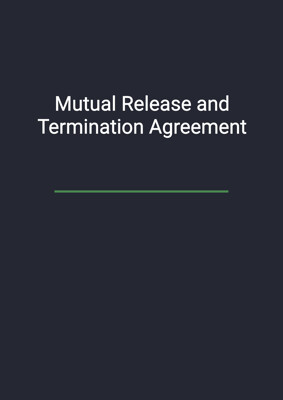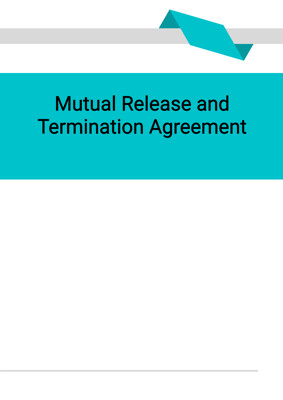How to Tailor the Document for Your Need?
01
Create Document
Fill in the details of the parties. You can click the "Fill with Member’s Information" button to complete it with information saved to your account.
02
Fill Information
Please fill in any additional information by following the step-by-step guide on the left hand side of the preview document and click the "Next" button.
03
Get Document
When you are done, click the "Get Document" button and you can download the document in Word or PDF format.
04
Review Document
Please get all parties to review the document carefully and make any final modifications to ensure that the details are correct before signing the document.
Document Preview
Document Description
The Mutual Release and Termination Agreement is a legal document that is entered into by four parties: Party 1, Party 2, Party 3, and Party 4. The agreement is being terminated by mutual consent. The document begins by stating the termination date and the parties' agreement to terminate the original agreement and any amendments to it. It also states that the parties release and discharge each other from any termination obligations, including claims and demands. The parties are not entitled to exercise any termination rights under the original agreement.
The document includes an interpretation section that defines certain terms used throughout the agreement. It defines 'excluded obligations' as liabilities and obligations that are already accrued and in existence as of the termination date or do not relate to the business. 'Excluded rights' are defined as rights that are already accrued and in existence as of the termination date or do not relate to the business. 'Termination obligations' refer to all the liabilities and obligations of a party under the agreement, excluding the excluded obligations. 'Termination rights' refer to all the rights of a party under the agreement, excluding the excluded rights.
The agreement states that as of the termination date, none of the parties or their affiliates will have any liability or obligation to each other under the original agreement, except for any excluded rights and excluded obligations, which will continue to be in effect according to the terms of the original agreement. The parties also agree to perform any further acts and execute any further documents necessary to implement and give effect to the termination agreement.
The termination agreement can be executed in multiple counterparts, and each counterpart is considered an original. However, all counterparts together constitute one instrument. The agreement clarifies that third parties who are not parties to the termination agreement or the original agreement do not have the right to enforce any of its terms. The governing law for the termination agreement and the relationship between the parties is the jurisdiction state law.
The termination agreement is signed by the duly authorized representatives of each party.
How to use this document?
To use the Mutual Release and Termination Agreement, follow these steps:
1. Review the termination agreement: Read through the entire termination agreement to understand its contents and implications.
2. Identify the parties: Identify the four parties involved in the agreement: Party 1, Party 2, Party 3, and Party 4.
3. Determine the termination date: Note the termination date specified in the agreement, as it marks the effective date of termination.
4. Understand the termination terms: Familiarize yourself with the termination terms, including the agreement to terminate the original agreement and any amendments, the release of termination obligations, and the prohibition on exercising termination rights.
5. Interpret key terms: Pay attention to the interpretation section, which defines terms such as excluded obligations, excluded rights, termination obligations, and termination rights.
6. Assess liability and obligations: Understand that as of the termination date, the parties and their affiliates will have no liability or obligation to each other, except for any excluded rights and excluded obligations.
7. Perform further acts: Agree to perform any further acts and execute any further documents required by law or necessary to implement and give effect to the termination agreement.
8. Execute the agreement: Sign the termination agreement, ensuring that it is executed by the duly authorized representatives of each party.
9. Keep counterparts: Keep multiple counterparts of the termination agreement, as each counterpart is considered an original.
10. No third-party rights: Remember that third parties who are not parties to the termination agreement or the original agreement do not have the right to enforce any of its terms.
11. Governed by jurisdiction state law: Understand that the termination agreement and the relationship between the parties are governed by the jurisdiction state law.
By following these steps, you can effectively use the Mutual Release and Termination Agreement to terminate an existing agreement by mutual consent.
